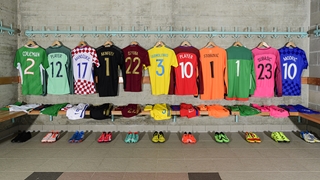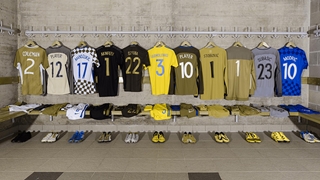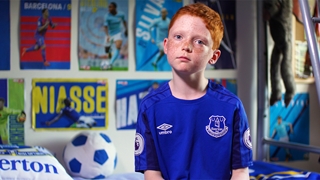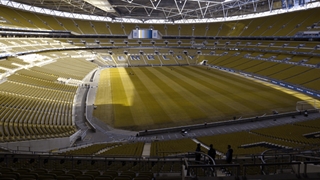
Match day. The best day of the week. The one we have all been eagerly counting down to.
As a coach, it’s time for all that hard work and preparation on the training pitch to come to fruition.
The players arrive with smiles on their faces ready to give their all. For fans walking to the ground, the sense of anticipation builds as kick off approaches. As the two teams line-up, who knows what excitement, joy, drama and learning experiences the afternoon will bring.
Except there is a problem. A big problem. Both teams are wearing exactly the same kit.
At least, that's what it looks like to me. Why? Because I, like over 300m other people worldwide, am colour blind.
In fact, believe it or not, one in 12 males and one in 200 females have some degree of colour vision deficiency (CVD). Statistically, that’s at least one in every male squad, from grassroots to the Premier League.
Raising the awareness of the condition is obviously vitally important to every single colour blind player, spectator, official and coach.
And hopefully Colour Blind Awareness Day helps to keep the challenges they face – and the simple solutions – in the consciousness of everyone involved in the game.
Increased knowledge and understanding of CVD, and the strategies to combat it on the football pitch, will only lead to increased performance and enjoyment for every player and team – and most significantly – be another big step forward towards our vision of a game For All.
As a player growing up, while my teammates were excitedly talking in the car on the way to a game about how many goals they might score and which celebration they would do, my thoughts were of which kit the opposition might turn up in or which bibs and cones the coach had in their bag.
Would I end up accidently passing to an opponent and conceding a goal in the last minute? Would I dribble the ball off the pitch because I couldn’t see the lines? Will I be able to see the ball when it’s at the other end of the pitch?
Being able to distinguish between the two teams, see the ball clearly and recognise where the pitch boundaries lie, is, of course, fundamental to the experience enjoyed by everyone involved in our wonderful game.
So, as coaches, what can we do to ensure that those with CVD, whether they're aware they have the condition or not, are not experiencing challenges which may affect their enjoyment or performance?
• The biggest challenge for any player with CVD is distinguishing between their own team and the opposition. Try to avoid common colour blind kit-clashes in matches and training such as Red v Green, Blue v Purple or Yellow v Orange. Blue v Yellow/White is the most colour blind friendly option.
• Marking out playing areas in training will be vital to the success of your practice. However, these zones may be hard to see for players with CVD so try not to use red or orange cones on a green surface. Yellow and white cones will provide the biggest contrast to a grass pitch.
• There's now a wonderful array of coloured footballs to choose from when purchasing your equipment for the new season. Unfortunately, some of these balls, such as the red or orange, may be extremely difficult to pick out against the green grass, especially from a distance. A traditional white ball will be much easier for colour blind players to see.
• Players with CVD may struggle to follow instructions involving colours during team-talks and training sessions. When using coloured pens on tactics boards, aim to distinguish between teams using different shapes e.g. triangles v circles
Keeping these simple principles in mind on match and training days will have a significantly positive impact on the experience of all those with CVD. Ultimately, and most importantly, it will ensure that, colour blind or not, every single player can concentrate on dreaming about scoring a last-minute winner and not about the colour of their kit.
FIND OUT MORE ABOUT COLOUR BLIND AWARENESS










